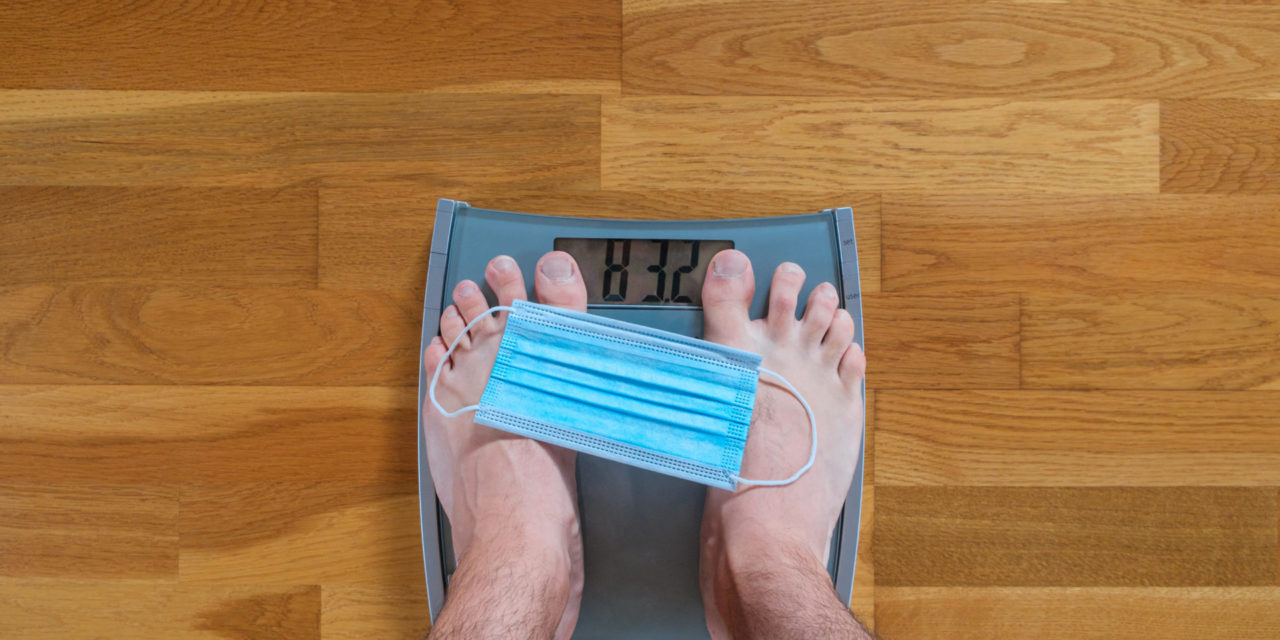COVID-19 has brought massive changes to society.
Wearing masks, no large public gatherings, social distancing – meaning no handshakes, much less hugs – and the result is that nearly everyone has become more isolated than they were in pre-COVID days.
One aspect of working at home, staying at home and not being able to get out and about is often referred to as “The COVID Nineteen” referring to 19 pounds gained during the continuing COVID crisis.
According to a survey done by the American Psychological Association, “The COVID Nineteen” should actually be called “The COVID Twenty-nine.” The survey found that 61 percent of adults in the US have gained an average of 29 pounds so far during the COVID crisis. And 10 percent of those responding to the survey had gained more than 50 pounds.
Dr. Mani Kukreja (MD, MPH, IIN), integrative nutrition health coach and founder of Livagewell, in a press release said, “Stress provokes a vicious cycle that makes people gain weight. You’ve eaten, but since you’re stressed, the sugar goes to the wrong place. It goes into your blood, not into your cells, so you feel tired. The cells are deprived of energy, so they send the signal to the brain that they’re hungry. So the brain tells the body to eat again.”
Working at home with a kitchen and a fully stocked refrigerator right down the hall, didn’t help. Nor did the fact that the grocery store was one of the few places people could go during the height of the pandemic restrictions.
David Sarwer, PhD, director of the Center for Obesity Research and Education at the College of Public Health at Temple University, said in a press release, “The stress, isolation, and challenges of making life work over the past year have necessitated changes in our behavior. For those of us in the obesity field, the weight changes aren’t surprising – but they are concerning.”
Children, most of whom were required to take classes at home instead of at school, also gained weight during the pandemic. According to an analysis done by the Children’s Hospital of Philadelphia Care Network, pediatric obesity increased from 13.7 percent to 15.4 percent during the pandemic.
With mask mandates going back into effect and increased COVID restrictions on the horizon, it doesn’t appear life will be getting back to normal anytime soon, so who knows what “The COVID Twenty-nine” will become before it is over.


Baloney!
Right! We stopped eating out anywhere, not even take-out for all of last year. We cooked at home; each of us taking turns to see what we could come up with. Well, I came up with 14 pounds; I still have 11 of it. I was afraid to ask the wife what she gained – or even if she gained anything all.
Yesterday, we had turkey and provolone cheese sandwiches with roasted red peppers and special mayo/chili sauce; on a toasted ciabatta bun. And red pepper soop, with basil & feta cheese as garnish. You get the idea.
I need to do 50 laps.
Ok, here is the thing, how much of it is muscle?
One thing I noticed during COVID*19 on my commute to work (we were deemed “essential”) was that a lot of people were out exercising and some people were beginning to exit restrictions in better shape than they entered it.
Weights and weight benches were hard to come by during the COVID-19 period as well.
I have no doubt people gained weight, but I am curious the details and nuances of those figures. It is great that the obesity studying people have an opinion on the statistic, but I am still curious how much of it is related to obesity and how many people affected were obese before hand? What is the % increase in new obesity cases? Is there a 1:1 correlation?